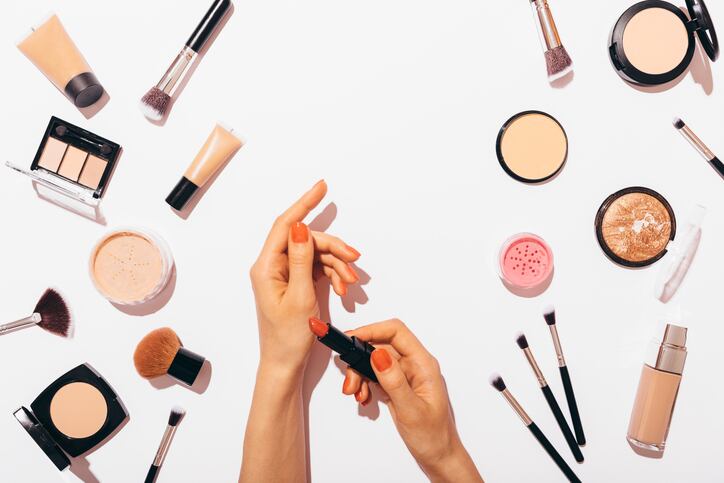Sampling is a way for brands to entice, engage and enable beauty buyers to enjoy products pre-purchase. And with the pandemic shutting stores, brands needed a way to reach consumers. The answer? Online. But as brick-and-mortar stores reopen, it is not only the physical retail landscape getting a makeover; digital sampling is driving the online experience and shaping approaches in the world of beauty samples.
Beauty sampling focus ‘has only increased’ during COVID-19
“The influence and acquisition powers of sampling has only increased amid the COVID-19 pandemic,” said Valerie Jacob, co-founder of marketing technology firm and beauty sampling platform Samplicity.
“The impact of the pandemic on the way we live our lives has accelerated the ‘digitalization’ of consumer behavior. Consumers want to discover and buy their fragrances and cosmetics differently,” Jacob told CosmeticsDesign-USA.
Samples are now an integral part of the optimized digital experience, she said, with the ability to discover products on mobile, try them at home and buy online becoming a popular way for consumers to purchase beauty products.
And all of this was particularly important at a time when, globally, online sales of cosmetic products increased by approximately 40% in 2020, compared to 2019 figures, according to the L'Oréal Annual Report 2020.
Digital marketing changes and the future of ‘smart data’
And all of this was impacting how industry operated, Jacobs said. “A shift of mentality in digital marketing is clearly being felt.”
“…The way to navigate this change is to transition from a quantitative to a qualitative mindset by tapping into the potential of smart data,” she said
Personalization is increasingly paramount today, she said, and more tailored communication that is sent less often and accurately targets specific consumers is vital to overcome information overload. Samplicity, for example, prefers to provide brands with “ultra-qualified leads” after a campaign which it can enrich with fine granularity attributes aggregated in time. Samplicity’s members explicitly authorize the platform to share their data with brands to enable them to receive targeted marketing operations.
“A brand cannot claim to be ‘consumer-centric' when the exact same content, regardless of individual consumer’s feedback, is sent to a whole email list collected after a campaign,” emphasizes Jacob. “Everyone is tired of receiving endless promotional emails, often badly targeted, that only emphasize brands’ cluelessness in regards to who you are and what you want.”
Adopting a personalized approach enables brands to bypass wasteful and sizable sampling and communication campaigns, she said. Instead, they can utilize shorter and qualitative lists to provide consumers with specific content that actively reflects their needs.
“Identifying customers by name in an email isn’t fooling anyone, and instead, a truly tailored communication should know how to please and respond to the needs of a particular moment,” she said.
‘Seduced, reassured and convinced’ – samples drive purchases, still
And it was important to note that consumers still highly value samples as a core factor in their decision-making process, Jacobs said. “Testing remains essential to be seduced, reassured and convinced that the product fully corresponds to their needs and sensorial emotions.” Increasingly, she said a framework to test new products has become a requisite for meeting consumers’ sampling expectations. “Some of our members even claim the ‘right to try before you buy”.
For brands, the benefits of online sampling go far beyond just purchase conversion. “When well monitored, it can be an amazing marketing tool for awareness, leads acquisition, client engagement, metrics, insights and most importantly, fine granularity data analytics,” said Jacob.
She also said that undertaking studies to understand what consumers want from their sampling campaigns can provide vital information that guides future product development or lead formulation requirements. For example, after carrying out a cosmetic serum campaign, Samplicity detected that the formula’s color was generating concern among consumers, and in some cases, deterred consumers from buying the product.
Previously unaware, the brand, equipped with this knowledge, was then able to provide ingredient information on the core components of the formulation causing the product’s tint in subsequent communication campaigns, providing reassurance and encouraging sample uptake.
Online or offline sampling?
And within this, Jacobs said providing an omnichannel experience remains high on the priority list for brands because consumers want to enjoy a seamless path from online to offline, offline to online, and back again.
“The key is for brands to maximize the benefits gathered from their samples, which are costly to produce but have time and again proven to be indispensable,” she said.
However, when compared, offline comes out on top, Jacobs believes: “Both online and offline samples are here to stay, but when properly monitored, the latter has a demonstrably greater return on investment.”
“Offline samples continue to play a decisive role in building loyalty with consumers who are already clients”, Jacobs said, particularly for beauty salon brands, brands that own directly-operated stores, and department store brands. “However, when the sample is distributed offline, information is easily lost within the current omnichannel consumer pathways, and brands benefit from little feedback on the products and little opportunity to pursue interaction with the consumer.”
For multi-brand retailers who seldom receive samples from the same brand as the product just bought, offline benefits for brands are even “slimmer”, Jacobs said. “The offline sample is usually distributed randomly according to availability and comes as a ‘gift’ from the retailer itself,” she said. Within this context, brands are unable to extract client data, receive any product feedback, and there is little pursued interaction with the consumer, she said. In this scenario, online sampling offers better opportunities as digital sampling does not suffer these limitations, Jacobs said.




